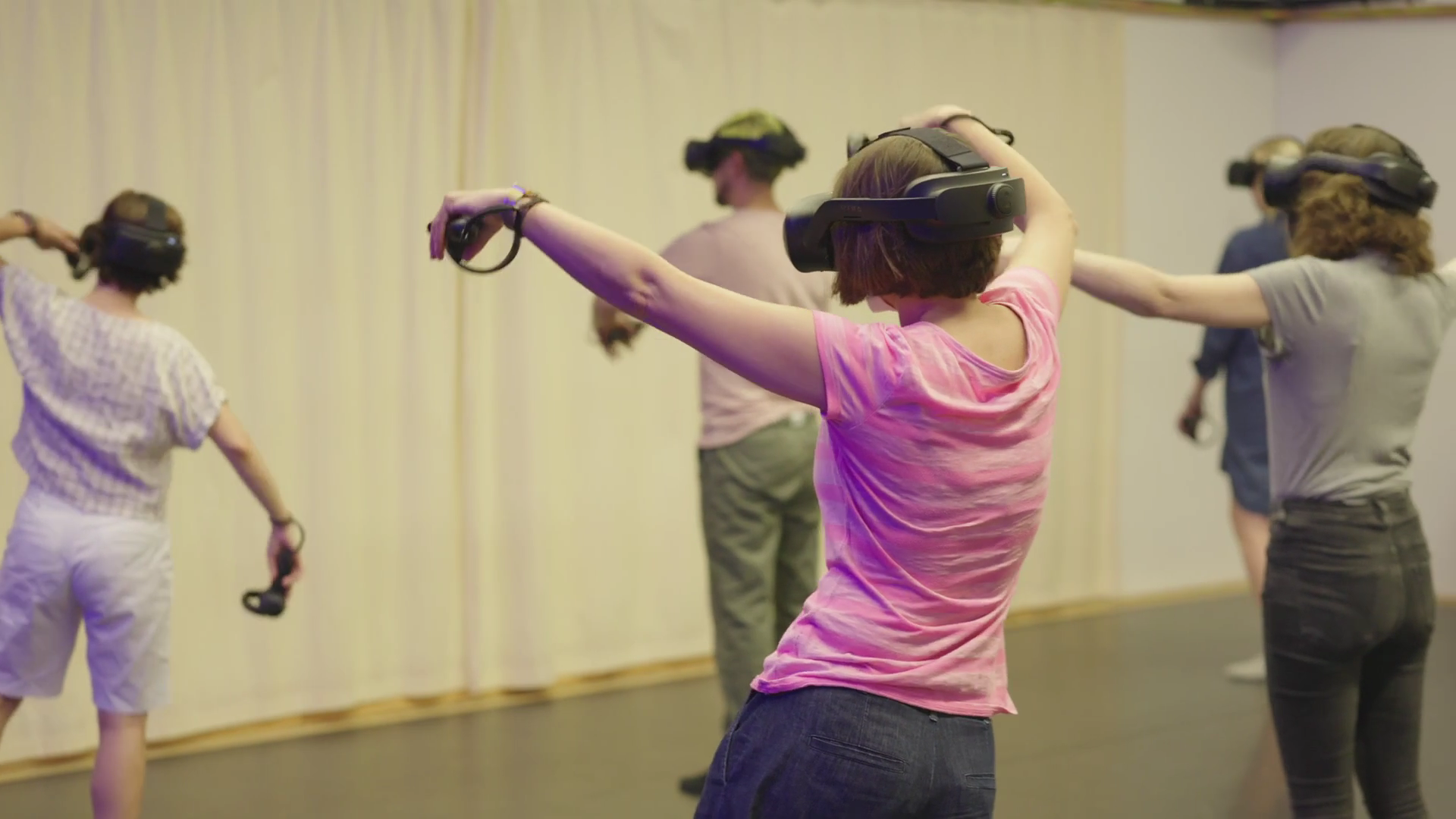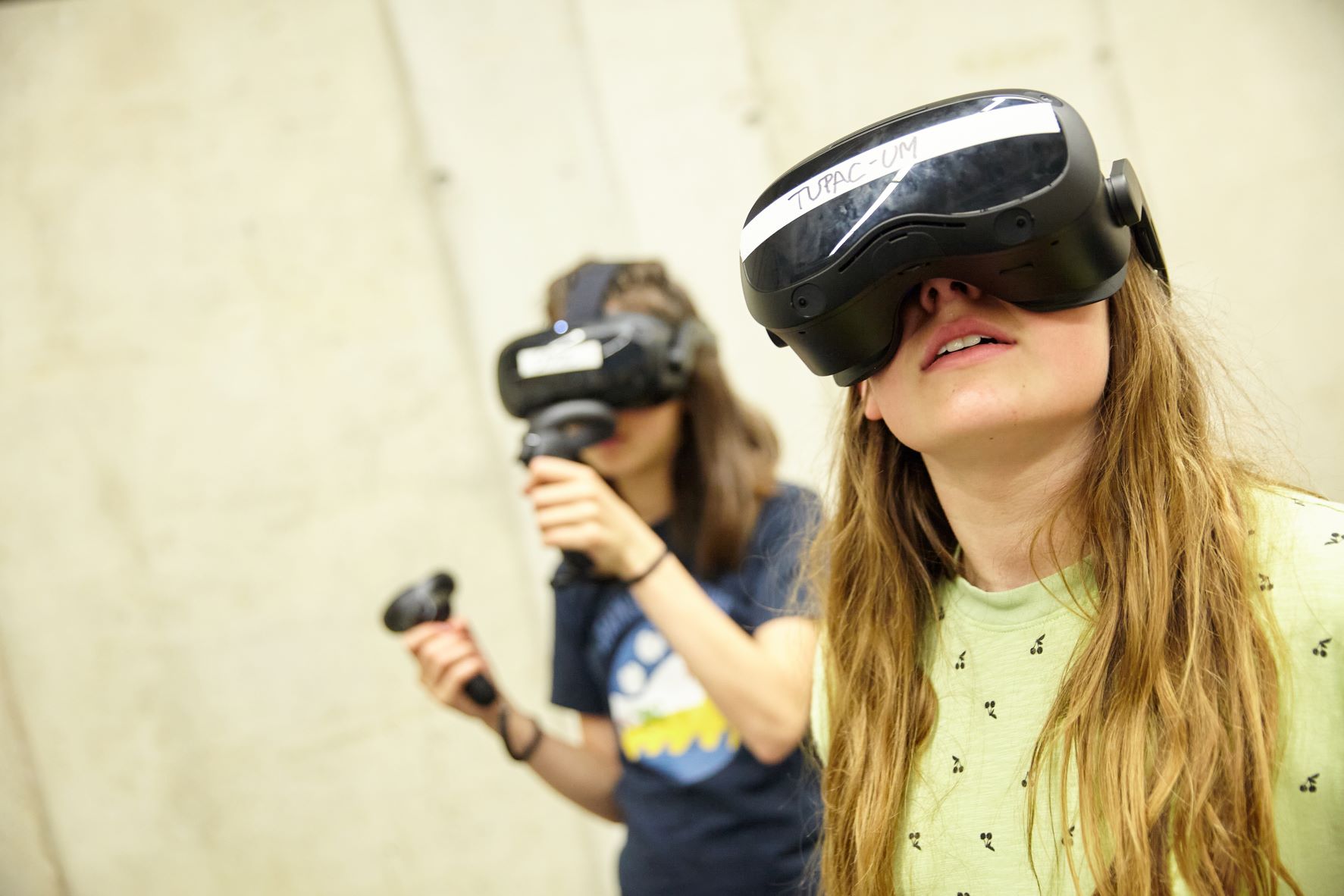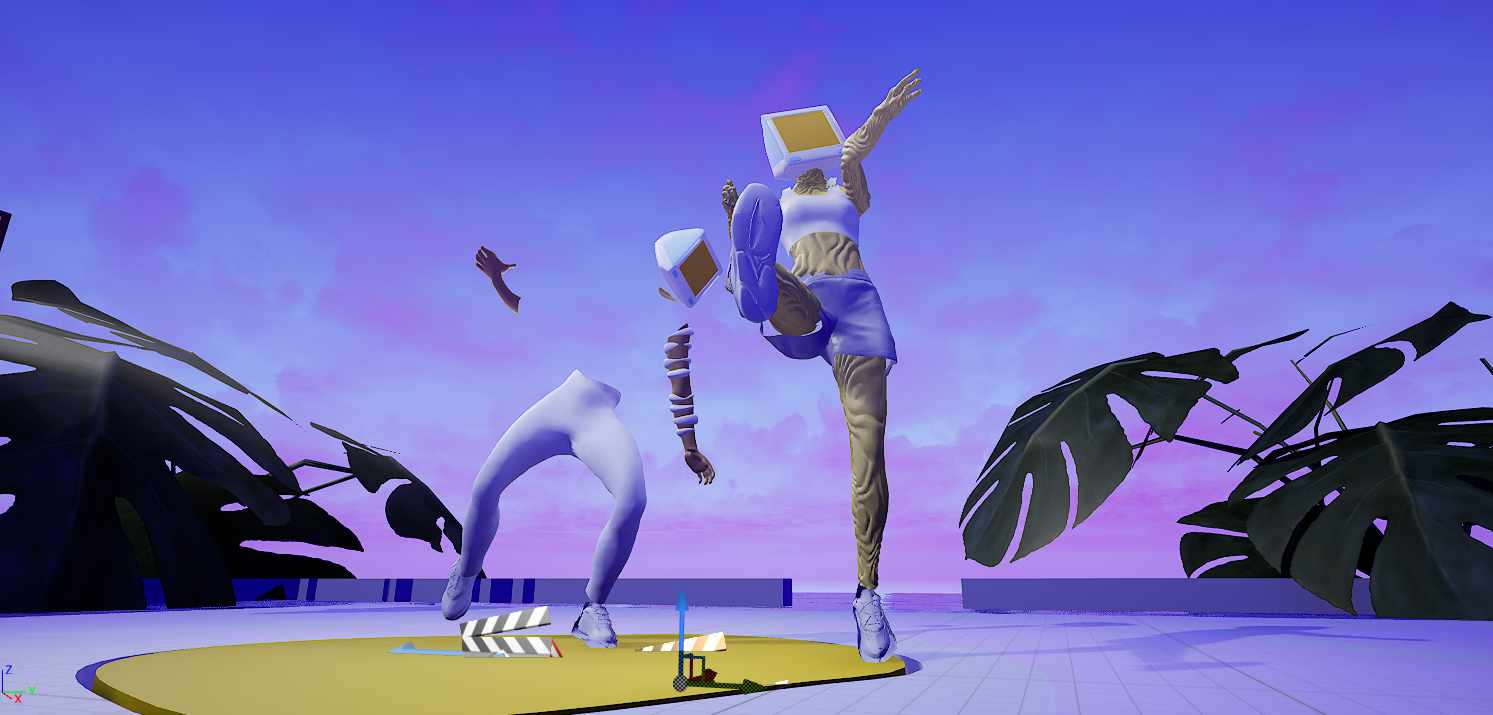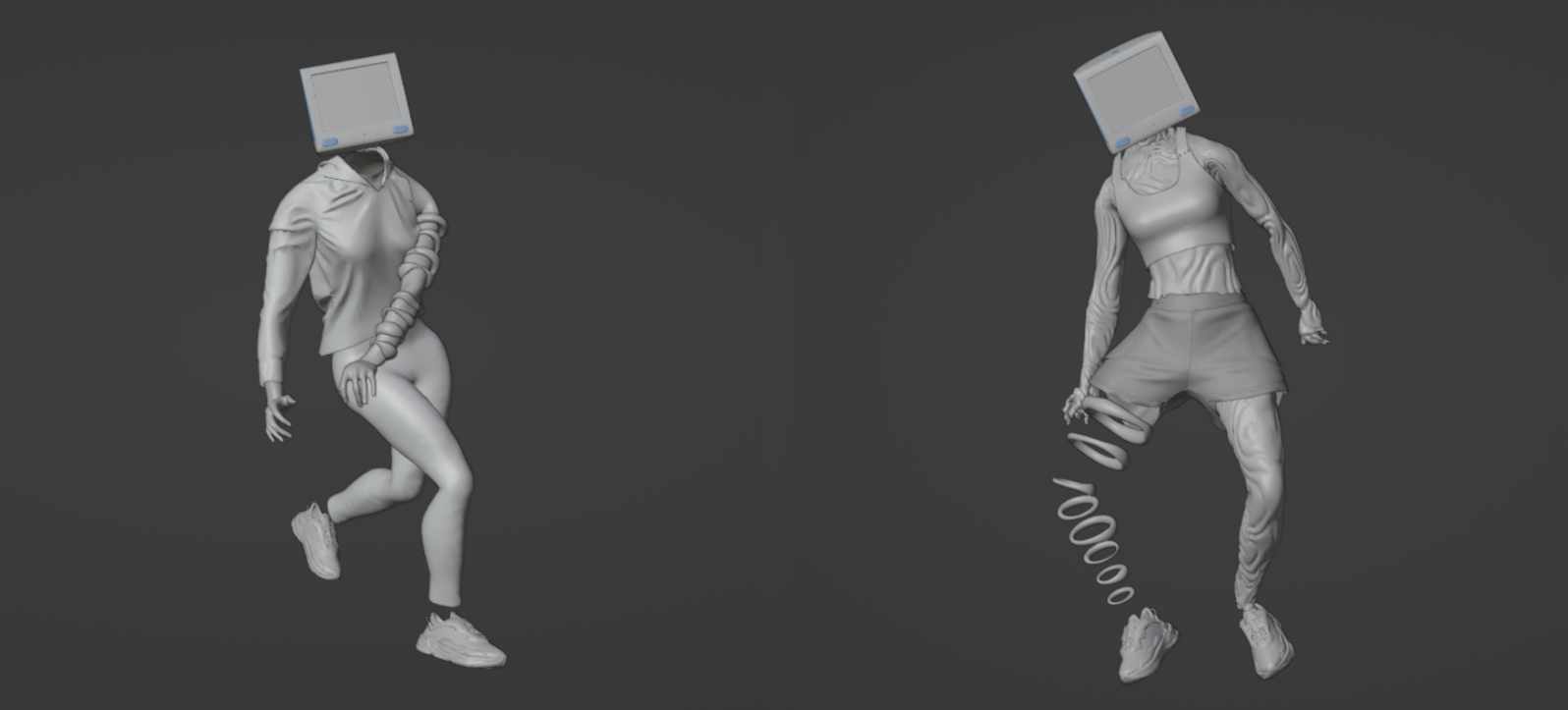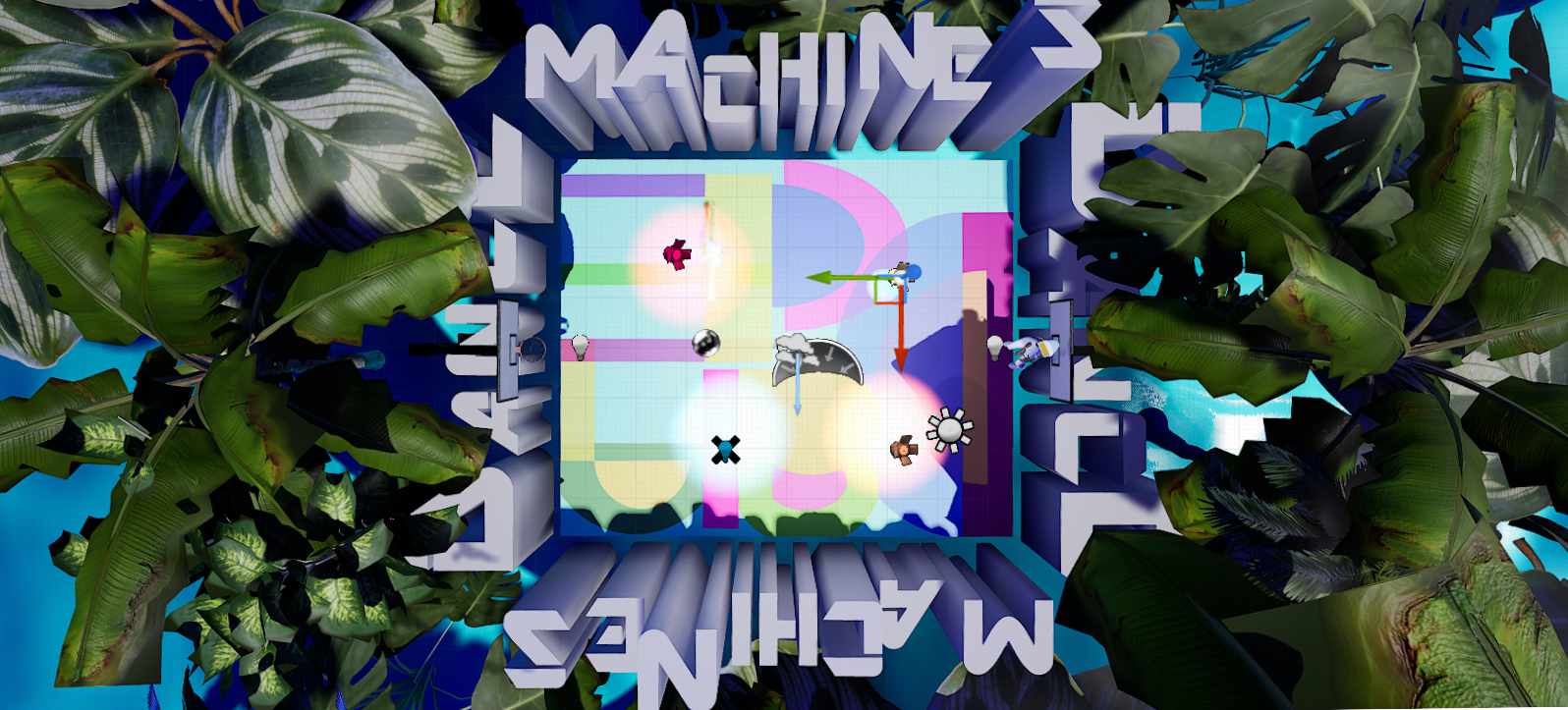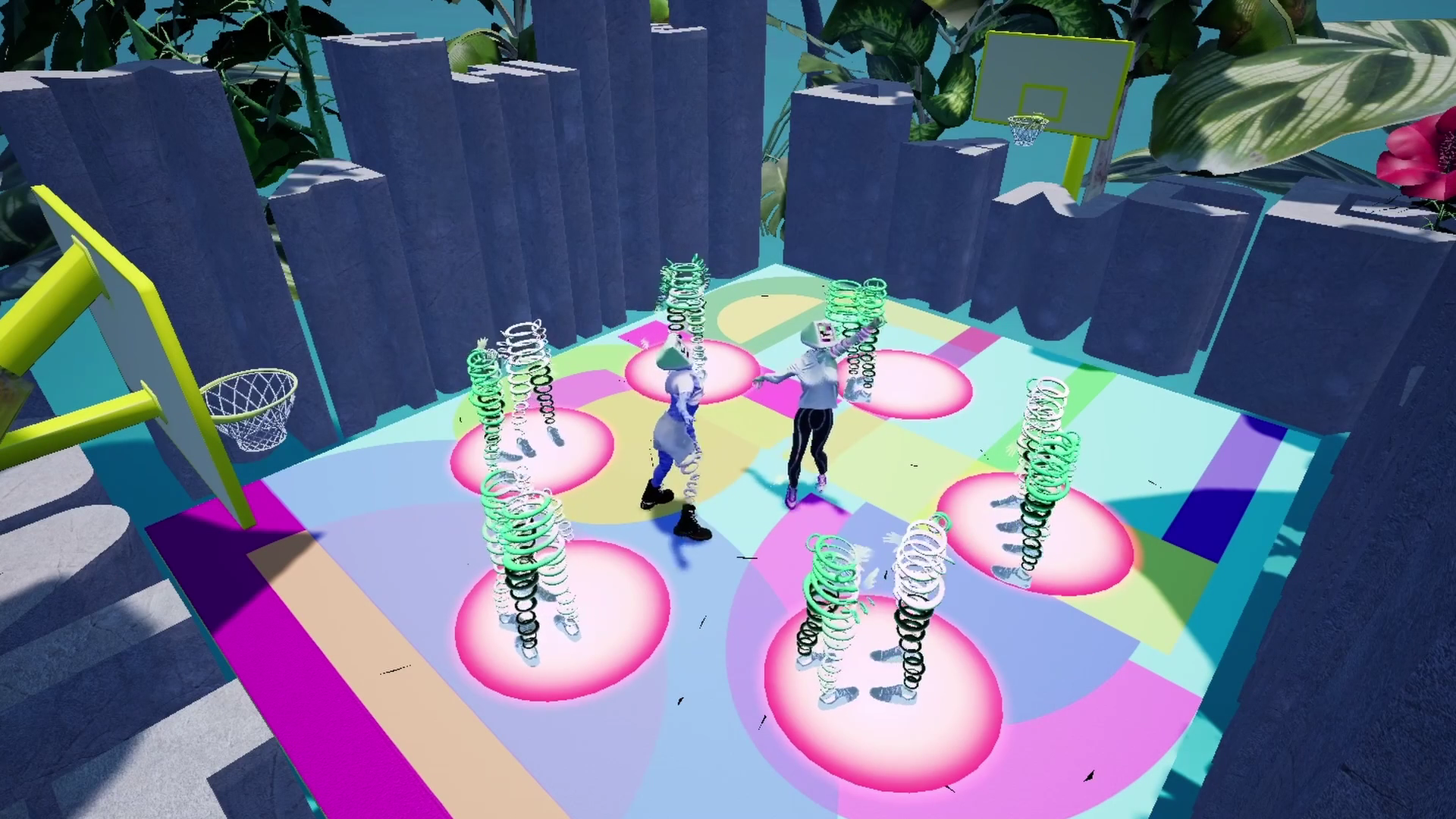Dance Machines
First congruently functioning VR multiplayer application with individually controllable audio and video content!
The "Studio für unendliche Möglichkeiten", with support from HTC's Development team, has developed a working prototype that reliably does the following:
12 people are in a room wearing Vive Focus 3 headsets. They enter a virtual room that is congruent with the physical room (floor, walls and objects are congruent in VR and analog) and they see each other in real time as avatars.
The rooms can be changed continuously for all - or for individual users. In the audio layer, too, users can send or receive individual content to all or only to individual avatars.
This VR-multiplayer-prototype was used artistically for the first time at K3 Tanzplan Hamburg Kampnagel in the production "Dance Machines" by choreographer Regina Rossi, tested with many young visitors and successfully premiered. The application runs stably and always triggers great enthusiasm among the participants.
Using cutting-edge technology as a cultural technique.
In one of the studios of K3 - Zentrum für Choreographie | Tanzplan Hamburg at Kampnagel, something extraordinary happens on a Friday in June 2022.
11 young people and I stand in a circle, we put VR headsets of the latest generation on our heads and enter a digital space. The perception of the digital space and the physical presence of the real studio are congruent: the floor visible in the glasses is the floor under our feet, the walls of the digital space are the walls of the studio. And - something no one has managed before - where 11 other young people were standing a moment ago, 11 avatars are now visible in the glasses, looking different from the people who were there before, but moving just like them. All participants see all the other avatars: where they stand, how they walk through the room, and precisely: how they dance.
Because that's what it's all about today: the question Regina Rossi poses in "Dance Machines" is: "What can dance classes of the future look like?" Dancing with another avatar and simple settings such as night dancing, mirroring, greeting gestures, has worked very well as an introduction to this world that is not familiar to anyone, whose rules we are just beginning to learn together.
The landscape, called a "map" in technical language, physically corresponds to the floor and walls of the analog space, but the design does not. Digital technology director, developer and designer Gloria Schulz worked with set designer Doris Margarete Schmidt to create an open basketball court in a tropical island setting. Palm trees tower in a tropical evening sky and you can hear birds and the sea.
The tasks increase: where in the duet the focus is more on remembering how one's own body looks and the thought of how that might look to the people present from the outside without a VR headset, then in tasks like "Quickly follow this red dot on the floor in pairs" it is the fear of colliding with other participants*.
There is one more moment that unlocks the emotional potential of this cultural technique: At one point, I am asked to lift the avatar I just danced with onto a palm leaf. The leaf appears quite realistically on my hand and the thick stem of the palm leaf merges with the haptic impression my hand has of the controller made of hard plastic (which I hold anyway). On the leaf is the same person, the same avatar I was dancing with a moment ago, about six inches tall, but quite detailed and dancing just as before. I can hold her right in front of my face and see every detail, every muscle movement on her collarbone, every impulse in her hands, every breath before a jump. It is completely clear that this is a live person dancing on my hand, not a robot or a puppet. Nothing prepared me for this completely new, very intimate form of encounter. The sequence is not long at all, but I will never forget this impression of seeing a living, dancing person on my hand. (To make this possible, footage was shot and edited over and over again over a period of six weeks using a "motion capture" suit worn by the dancers in the production.
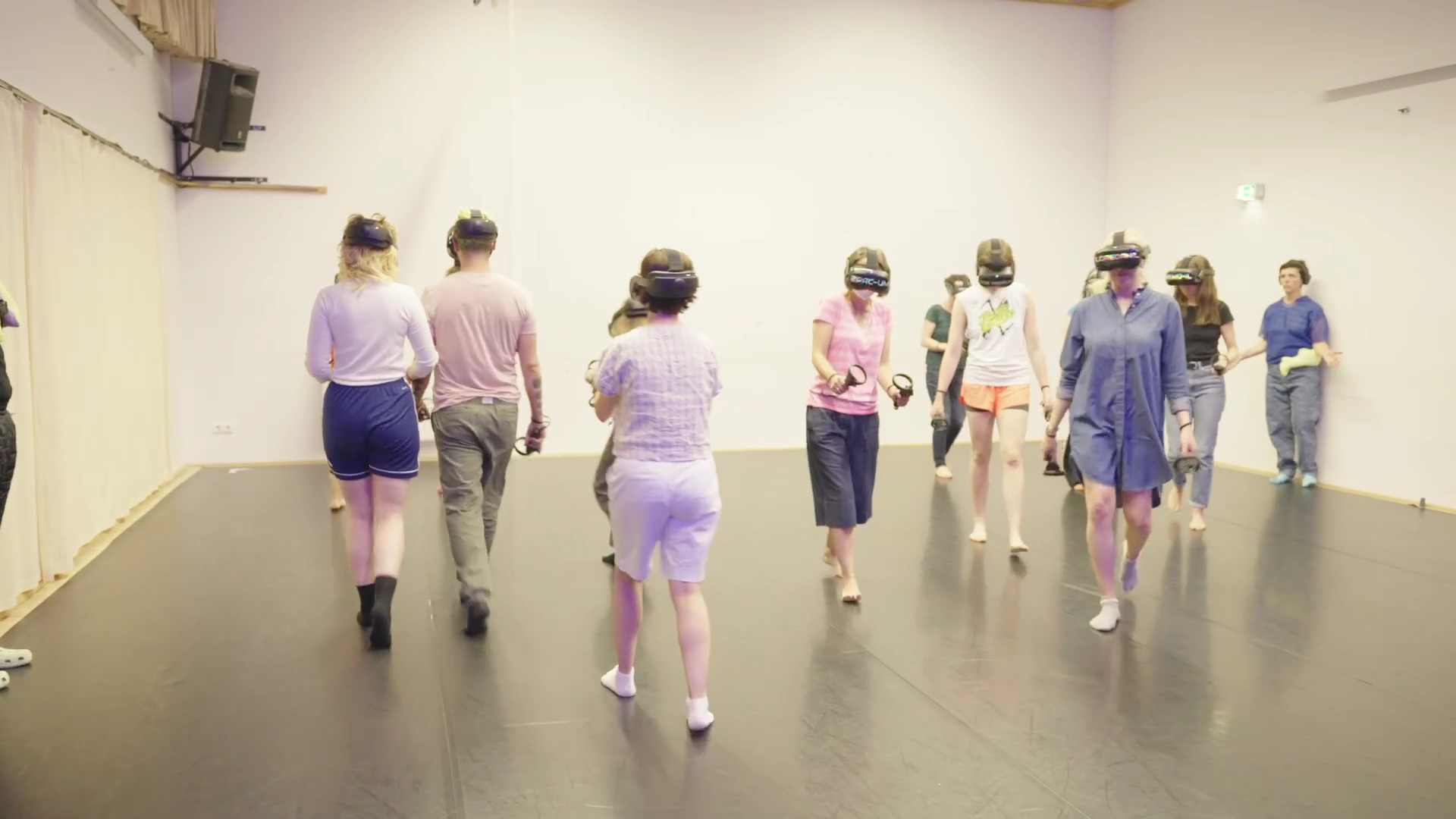
After about half an hour, the first part ends. We participants now exchange the VR headsets for headphones and take a seat on a small stand. From there, we can watch the next 12 people move with the VR headsets half in the digital, half in the analog. It's especially nice to recognize certain scenes: Just the solo on the palm leaf, or the sequence in which everyone has to dodge a flock of birds that keeps approaching. Cultural journalist Falk Schreiber comments in the Hamburger Abendblatt: "Here you suddenly realize what touching, also aesthetically pleasing movements you perform while losing yourself in the digital illusion."
It seems a very good choice to conceive this first project using this prototypical application for young people: the high competence of young people to understand and apply new, digital cultural techniques, the familiarity with diverse game concepts, but also the very affirmative attitude to quickly learn short dance sequences (as in TikTok) are mentioned by the "Dance Machines" team as an important influence on the elaboration of this piece.
Realistically, maybe 500 people will experience this production, maybe - with good luck - around 1000. This is nothing compared to the hopes usually postulated with the supposed arbitrary scalability of digital applications. What happens here is that a choreographer and a programmer and digital artist take a cutting-edge digital technology together, develop it with an artistic goal, and thus formulate a digital cultural technique that did not exist before. They apply it in a very limited way in terms of time and space. Perhaps also in order not to lose these small, magical moments of surprising intimacy. And this shared feeling when the participants leave the room: everyone who was just here will always remember how this new cultural technique felt for the first time, none will forget it.
Infinite Future Scenarios:
Looking into the future from here, what are some other applications we can assume we'll be able to try in a few years?
For now, let's stick with the application developed by the Infinite Possibilities Studio:
In the next step, which again exponentiates these possibilities infinitely, everyone else's avatars can be defined. On the one hand, they can have any conceivable appearance for themselves, but can then be represented differently to the other participants. That means, I see myself as Nureyev and all others see me as Pipi Langstrumpf. And to take it a turn further: Another participant sees me as Pipi Longstocking, another as Bud Spencer, one as Homer Simpson, or as Virginia Woolf, and for another I am invisible.
And to make it completely crazy: these appearances of the others can be changed continuously! The outer appearance can change constantly.
We don't know yet the rules according to which these spaces will function and according to which we will play, dance and relate there. In the next years we will learn them together
Team
Concept, Artist Direction, Choreography: Regina Rossi
Programming, 3D design, technical concept, motion capture: Gloria Schulz (Studio für unendliche Möglichkeiten)
Dance, Avatare: Nora Elberfeld & Sarah Lasaki
Music: Sven Kacirek
Outfitter: Doris Margarete Schmidt
Dramaturgy: Kirsten Bremehr
Dramaturgy advisory: Christopher Weymann
Mediation formats: Pauline Schönfelder
Press and public relations: Stückliesel
Production management: Isabelle Wapnitz
Collaboration programming & motion capture: Jeffrey van der Geest (Studio für unendliche Möglichkeiten)
